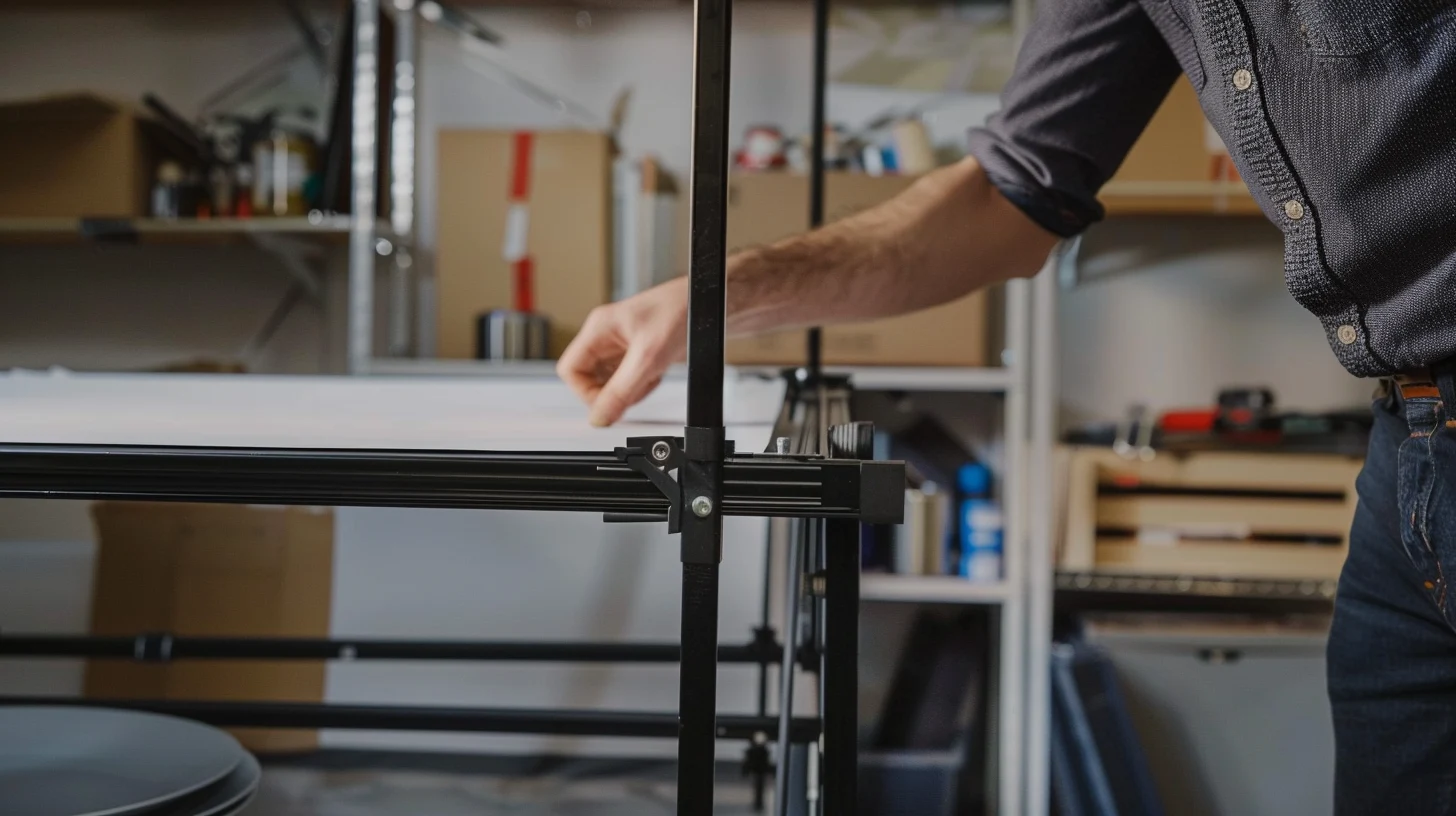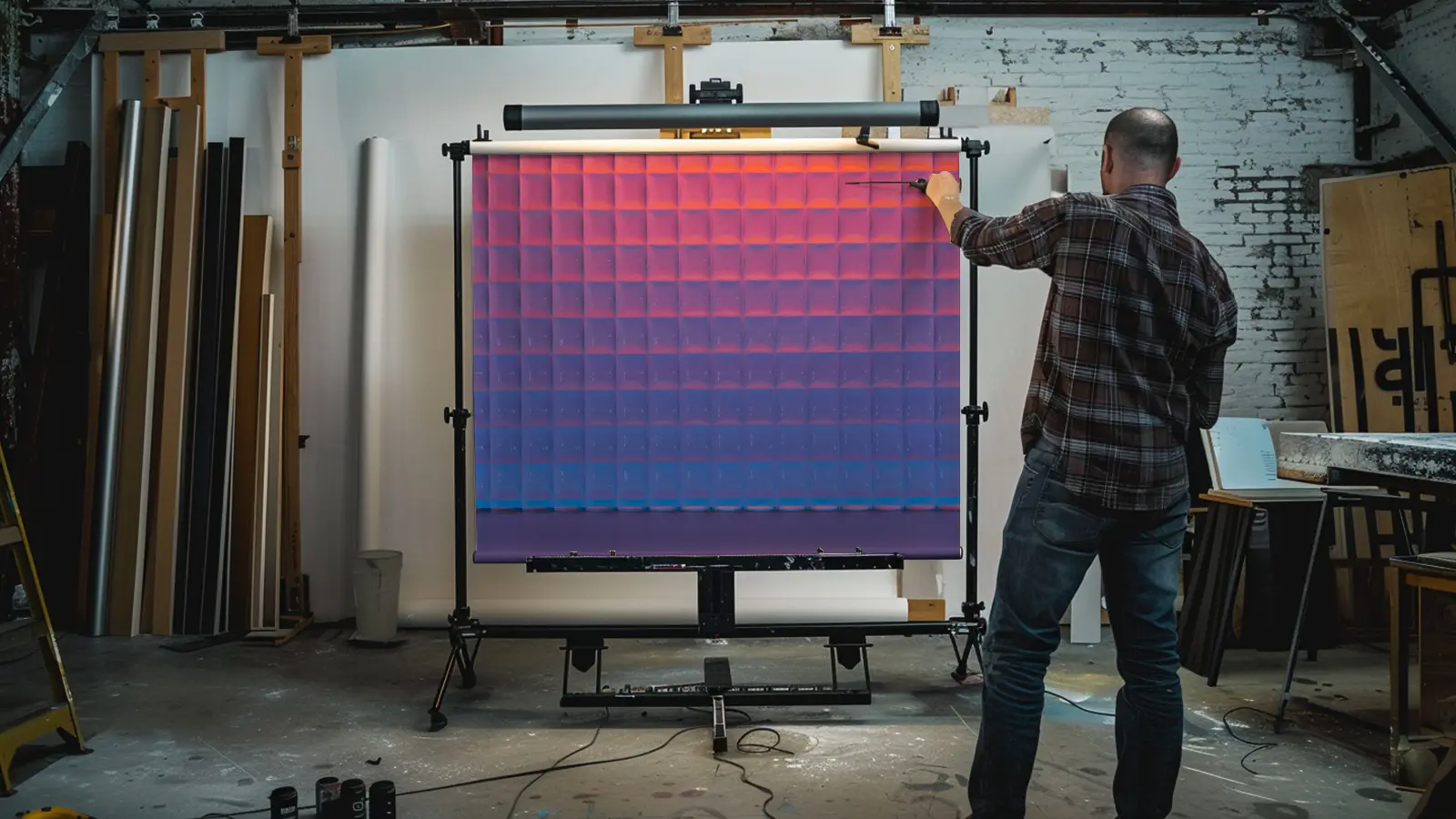
You might find yourself in a situation where you need to hang a backdrop, but there's no wall in sight. Don't worry; it's easier than it sounds. You'll start by setting up a sturdy, freestanding backdrop stand—these are readily available and not too expensive.
But here's a tip: don't rely on the stand itself. To ensure your backdrop stays smooth and professional-looking throughout your event or shoot, there's a simple yet crucial trick involving command hooks and possibly some weights, which I'll explain in just a bit. This technique might just be the game-changer you need.
Key Takeaways
- Use a freestanding backdrop stand. Assemble it according to instructions for stability and flexibility.
- Attach the backdrop using clamps or clips to secure it firmly to the stand.
- Stabilize the backdrop by adding extra hooks and fishing lines for added support.
- Ensure even weight distribution across the backdrop to prevent sagging and maintain a professional look.
- Consider using a combination of different backdrop types and textures to enhance visual appeal and adaptability.
Step 1: Set Up the Freestanding Backdrop Stand
Once you've unpacked your freestanding backdrop stand, follow the manufacturer's instructions to assemble it. Next, adjust the stand's height and width to perfectly fit your backdrop.
This setup will ensure your display looks professional and stays secure throughout the event.
Unpack and assemble the backdrop stand
Begin by unpacking the backdrop stand and assembling it according to the manufacturer's instructions. This is the first step in creating a professional appearance when hanging a backdrop without a wall.
A backdrop stand is essential for securing your fabric backdrop, especially when a wall isn't available for mounting. By setting up a stand, you avoid the hassle and limitations of hanging your backdrop using makeshift methods that may not offer the stability or aesthetic you desire.
Ensure all parts are correctly aligned and tightly secured to prevent the fabric from sagging or slipping. This setup not only looks more professional but also allows you to position your backdrop exactly where you need it.
Adjust the height and width
Adjust the stand's height and width to match the size of your backdrop, ensuring it fits perfectly. When setting up to hang backdrops without a wall, the flexibility of adjustable poles in your frame is crucial. Start by extending or retracting the poles until they align closely with the dimensions of your backdrop. This helps maintain a taut and professional appearance, preventing sagging or wrinkling.
Ensure the frame remains stable as you adjust. If you find the backdrop without sufficient tension, tweak the adjustable poles slightly. Always double-check that everything is securely fastened and stable before proceeding.
Step 2: Attach the Backdrop
Now that you've set up your stand, it's time to attach the backdrop. Start by draping the fabric or paper over the stand, ensuring it's centered and hangs evenly.
Next, secure the top edge with clamps or clips. Then, smooth out any wrinkles or creases to give it a professional look.
Place the backdrop fabric or paper over the stand
Place your backdrop fabric or paper over the stand, using curtain clips or drapery hooks to secure it firmly. As you position the fabric or paper, make sure it's evenly draped across the frame of the stand to prevent any unsightly wrinkles.
Don't hesitate to adjust the fabric or paper if you notice any sagging or uneven areas. You might need to reposition the curtain clips or use additional drapery hooks to achieve the desired tautness. This attention to detail is crucial in creating a visually appealing backdrop for any event or photography session.
Adjust the fabric to remove any wrinkles or creases
Smooth out the fabric carefully to eliminate any wrinkles or creases. This ensures a pristine appearance for your backdrop.
You could use painter's tape to secure the edges when working in a wall-less setup. It helps to maintain the backdrop's position without damaging any surfaces.
Make sure the fabric hangs evenly; any imbalance can cause unwanted folds. If needed, employ a handheld steamer to remove stubborn wrinkles. It ensures your backdrop looks professional and flawless for any event or photo shoot.
Step 3: Stabilize the Backdrop
To ensure your backdrop remains stable, consider using additional hooks for larger backdrops and adding an extra fishing line for support.
When setting up a DIY backdrop without a wall, it's crucial to secure your curtain or fabric properly. Firmly attach each hook to support the stand evenly, distributing the backdrop's weight to prevent sagging or slipping.
After mounting, gently tug the backdrop to test its stability. If it shifts, you may need to reposition your hooks or tighten the fishing line. This method ensures your backdrop stays securely in place, providing a smooth, uninterrupted surface for your event or project.
Tips for a Professional Look
To ensure your backdrop looks its best, use a steamer to smooth out any wrinkles.
Proper lighting is crucial. It enhances the appearance and brings out your backdrop's true colors and textures.
Don't hesitate to experiment with different colors and textures to see what gives the best effect for your setting.
Use a steamer to remove any wrinkles on the backdrop
Using a steamer, you can quickly eliminate any lingering wrinkles from your backdrop. Steaming is especially effective on various fabric types, whether with polyester or cotton. It's a gentle method that prevents the damage often caused by ironing.
Ensure proper lighting
Proper lighting dramatically enhances your backdrop, ensuring it looks professional and engaging. When setting up your backdrop for video, position your lighting sources in front to evenly illuminate the surface. This helps prevent unwanted shadows that might detract from your presentation. Opt for soft, diffused lighting to avoid harsh glare or reflections, which can be distracting and unflattering.
You'll also want to experiment with adjustable LED lights. These allow you to tweak both the color and intensity, adding depth and dimension to your video backdrop. By adjusting the angle and experimenting with different lighting setups, you can highlight your backdrop effectively without overpowering yourself or the subject in the frame. This ensures your video looks polished and visually appealing.
Experiment with backdrop colors and textures
Experimenting with different colors and textures for your backdrop can significantly enhance your setup's visual impact and give you more flexibility to achieve a professional look that suits your needs.
Don't shy away from textured backdrops like velvet or linen, which add depth and sophistication to your scenes. Using solid colors helps maintain a clean and distraction-free background, which is ideal for highlighting your subject. Darker shades can enhance the perceived depth, making your setup appear more refined.
Don't hesitate to mix and match backdrops, experimenting with different colors and textures to suit your branding or create the desired atmosphere. This approach allows you to adapt creatively to various themes and moods.
Conclusion: How to Hang a Backdrop Without a Wall
Now you're all set! With your backdrop securely hung on a freestanding stand, you've mastered a versatile setup without needing a wall.
Remember to keep the backdrop smooth and well-lit for a professional touch. Don't hesitate to experiment with colors and textures to see what works best for your scene.
With these tips and a bit of creativity, you'll impress with your backdrop setups at any event or photo shoot. Keep experimenting and enjoy the results!
FAQs
What can I hang a backdrop on?
You can hang a backdrop on frames, curtain rods, or PVC pipes. These options allow you to set up quickly and adapt to different environments, whether you're indoors or out.
How to hang a backdrop without a stand?
You can create a DIY frame using PVC pipes or wooden dowels to hang a backdrop without a stand. Assemble your frame, then attach your backdrop using clamps or ties for a customized setup.
Can I hang a backdrop with Command strips?
You can hang a backdrop using Command strips, as they're designed to hold securely without damaging surfaces. Ensure the backdrop's weight is within the strips' capacity and follow the installation instructions carefully.
Can I pin a backdrop to the wall?
Yes, you can pin a backdrop to the wall, but it's best for lightweight materials. Remember, pins might leave small holes and aren't the most secure method for heavier backdrops.



